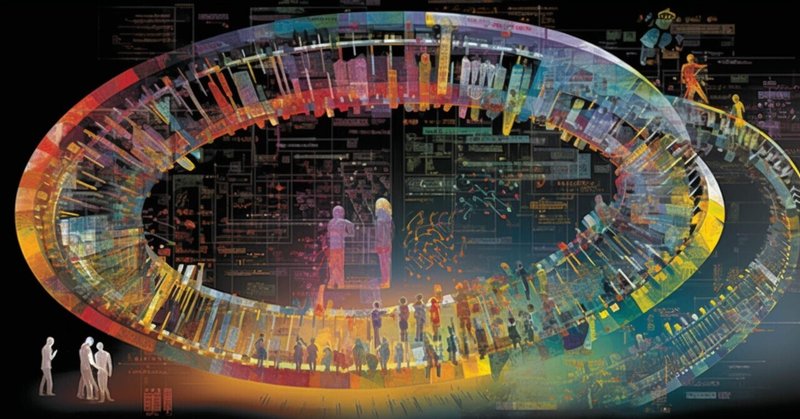
Omicsについて覚書メモ
私は大学病院入職1年目から中央放射線部に所属し、画像診断に関わる看護に従事していました。
4年目から放射線腫瘍科において放射線治療の現場で看護師をしておりましたので、医師が検査オーダーする場面から検査実施、放射線技師の撮影、画像診断医によって読影がなされ、担当医が確定診断を行うという一連の流れの中にはAIがアシストできる部分があると感じています。
画像検査のAI活用は医療の質の向上、時短につながるメリットもあり、患者さんにとってのベネフィットにつながると感じています。
1. ゲノミクス: 生物全体の遺伝情報 (ゲノム) を分析する科学。ゲノミクスは遺伝子の位置、役割、相互作用を解明し、病気の病因に貢献し、新しい治療法を開発します。
2. トランススクリプトミクス:RNA(遺伝情報を伝える物質)をトータルに解析し、どの細胞で、いつ、どのような条件下で、どの遺伝子が使われているか、病気による変化を研究する科学引き起こされた。
3. プロテオミクス: 遺伝情報から構成されるタンパク質全体 (タンパク質システム) を分析する科学。タンパク質は重要な働きをしており、その構造、機能、相互作用を研究することで細胞の機能を理解することができます。
4. プロテオゲノミクス: ゲノム情報とプロテオミクス情報を統合して、どの遺伝情報がタンパク質を作り、それらのタンパク質がどのように機能するかを分析します。
5. 代謝: 細胞や生物全般の代謝物を分析する科学の一分野。それがあなたにどのような影響を与えるかを理解してください。
6. リピドミクス: 細胞の総脂質 (リピドーム) を分析する科学。
7. フードミックス: 食品が人間の健康や病気にどのような影響を与えるかを研究するために、食品の完全な分子構成を分析する科学。
8. 接続: 脳内のニューロン(ニューロン)間の接続ネットワーク全体を分析する科学。これが脳内を情報が移動し、思考、感情、行動がどのようにして生まれるかということです。私が理解していること
9. ラジオノミクス: X 線画像から得られるすべての特徴を分析する科学。画像から得られる情報を病気の診断や予後診断に活用します。
10. ラジオゲノミクス: ゲノム画像情報と放射線画像情報を統合して分析し、遺伝情報が疾患の画像特徴や治療への反応にどのような影響を与えるかを理解します。 。 そして最後に、
遺伝子とゲノミクス。遺伝子は、特定の機能を持つ DNA の一部です。一方、ゲノミクスは、生物のすべての遺伝情報とゲノムを構成する個々の遺伝子を指します。ゲノミクスは、ゲノム全体を分析し、遺伝子の相互作用や機能を理解する学問です。
これらの科学はすべて、生物の複雑な情報を分析し理解するための方法を提供します。それぞれが生命現象をさまざまな角度から研究し、健康と病気の理解に貢献しています。
追加でRadiomicsとRadiogenomicsについてさらに詳しい解説を加えます。
Radiomicsとは、医療画像(例えばCTスキャンやMRI)から大量の情報を抽出し、それらの情報を用いて病状の診断や予後の予測を行う研究分野です。
簡単に言えば、Radiomicsは医療画像からたくさんの情報を取り出すのが目的です。例えば、ある人が脳のCTスキャンを撮ったとします。この画像には、脳の形状、組織の密度、さらには色調のパターンなど、人間の目には見えない詳細な情報が隠されています。Radiomicsは、コンピュータの力を利用してこれらの情報を解析し、その人が脳腫瘍を持っている可能性や、既に持っている腫瘍がどのくらい危険か、またはどのように治療すべきかなど、重要な医療情報を導き出します。
Radiogenomicsは、Radiomicsと遺伝学を組み合わせた分野で、医療画像の特徴と遺伝子の変化との関連を探る研究です。
この例を続けると、Radiogenomicsでは、脳腫瘍の医療画像だけでなく、その腫瘍の遺伝子情報も考慮に入れます。腫瘍は人によって異なり、その遺伝子情報によって腫瘍の成長の仕方や治療に対する反応が変わります。Radiogenomicsでは、CTスキャンやMRIのような医療画像と腫瘍の遺伝子情報を組み合わせることで、より正確な診断や個々に合わせた治療計画を立てることができます。
各論
画像診断におけるAI応用の一例
1. 放射線画像(Radiographic Images):
CT(Computed Tomography): CTスキャンは、人体を断面で見ることができるX線画像です。AIは、CT画像から異常部位を検出するのに使われます。たとえば、AIは肺CT画像から肺がんを検出したり、脳のCTから脳卒中を識別したりします。
MRI(Magnetic Resonance Imaging): MRIは強力な磁場とラジオ波を使って体内の詳細な画像を生成します。AIは、MRI画像を解析して病気の早期発見や進行度の評価を行います。例えば、AIはMRI画像から脳の異常や関節の病変を見つけることができます。
MRA(Magnetic Resonance Angiography): MRAはMRIの一種で、血管の画像を詳しく見るために使われます。AIは、MRAから血管の狭窄や閉塞、動脈瘤などの異常を検出するのに使われます。
マンモグラフィー(Mammography): マンモグラフィーは乳房のX線画像で、主に乳がんの検出に使われます。AIは、マンモグラムから微細な異常を見つけ出し、乳がんの早期発見を助けます。
放射線治療(Radiation Therapy): これはがんの治療法の一つで、高エネルギー放射線を使ってがん細胞を殺すか、その成長を遅らせます。AIは、放射線治療の計画を助け、正確に照射すべき場所を特定したり、周囲の正常な組織を保護したりします。
2. 内視鏡画像(Endoscopic Images): 内視鏡は体内を直接観察するための装置です。AIは、内視鏡画像を解析して病変(ポリープ、がんなど)を検出し、その種類を分類します。これにより、診断の精度が向上し、治療方針の決定に役立ちます。
3. 皮膚画像(Dermatological Images): AIは皮膚の写真
1. genomics: the study of all the genes (genomes) of an organism. These gene interactions and the interactions of organisms with the environment are also included.
2. Transcriptomics: The study of the complete set of RNA transcripts produced by the genome in a given environment or within a given cell.
3. Proteomics: Large-scale study of proteins, especially their structure and function.
4. Proteogenomics: The field of research that uses proteomic information to improve the annotation of genes.
5. Metabolomics: The scientific study of metabolites, small molecule intermediates, and chemical processes involving metabolites.
6. Lipidomics: A large-scale study of cellular lipid signaling pathways and networks in biological systems.
7. Foodmix: The study of the field of food and nutrition through the application of advanced omics technology.
8. Connectomics: Creating and studying the connectome: A comprehensive map of connections within the nervous system of an organism.
9. Radionomics: Transformation of medical images using feature sets that characterize disease phenotypes.
10. Radiogenomics: The field of research that investigates the relationship between the genetic makeup of tumors and their response to different types of radiation therapy. And finally,
Genes vs. Genomes (Genetics and Genomics): A gene is a set of DNA that has a specific function (such as a recipe for a specific protein). The genome, on the other hand, is the total amount of DNA in a cell and contains all the genes of an organism. Genomics is the study of all genes of an organism, the genome.
Radiomics is a research field that extracts large amounts of information from medical images (e.g., CT scans and MRIs) and uses this information to diagnose medical conditions and predict prognosis.
Simply put, Radiomics aims to extract a lot of information from medical images. For example, suppose a person has a CT scan of the brain. Radiomics uses the power of computers to analyze this information and determine the likelihood that the person has a brain tumor, how dangerous an existing tumor is, and how it should be treated, or how it should be treated.
Radiogenomics is a field that combines Radiomics and genetics to explore the relationship between medical imaging characteristics and genetic changes.
To continue this example, Radiogenomics takes into account not only the medical images of a brain tumor, but also the genetic information of that tumor. Tumors are different from person to person, and their genetic information can change how the tumor grows and responds to treatment; Radiogenomics combines medical images such as CT scans and MRIs with the genetic information of the tumor to allow for more accurate diagnosis and individualized treatment plans. Radiogenomics can help you make a more accurate diagnosis and personalized treatment plan.
An example of AI application in diagnostic imaging
Radiographic Images: CT (Computed Tomography): CT scans are X-ray images that provide a cross-sectional view of the human body.
Computed Tomography (CT): A CT scan is an X-ray image that provides a cross-sectional view of the human body. For example, AI can detect lung cancer from a lung CT image or identify a stroke from a brain CT.
Magnetic Resonance Imaging (MRI): MRI uses powerful magnetic fields and radio waves to produce detailed images of the body; AI analyzes MRI images for early detection and assessment of disease progression. For example, AI can find brain abnormalities and joint lesions in MRI images.
MRA (Magnetic Resonance Angiography): MRA is a type of MRI used to take a closer look at images of blood vessels; AI can be used to detect abnormalities from MRA, such as narrowing or blockage of blood vessels or aneurysms.
Mammography: Mammograms are X-ray images of the breast and are used primarily to detect breast cancer; AI can detect subtle abnormalities in mammograms to aid in the early detection of breast cancer.
Radiation Therapy: This is a form of cancer treatment that uses high-energy radiation to kill cancer cells or slow their growth.
Endoscopic Images: An endoscope is a device used to directly observe the inside of the body; AI analyzes endoscopic images to detect lesions (polyps, cancers, etc.) and classify their types. This improves the accuracy of diagnosis and helps determine treatment options.
3. dermatological images: AI uses photos of the skin
この記事が気に入ったらサポートをしてみませんか?
